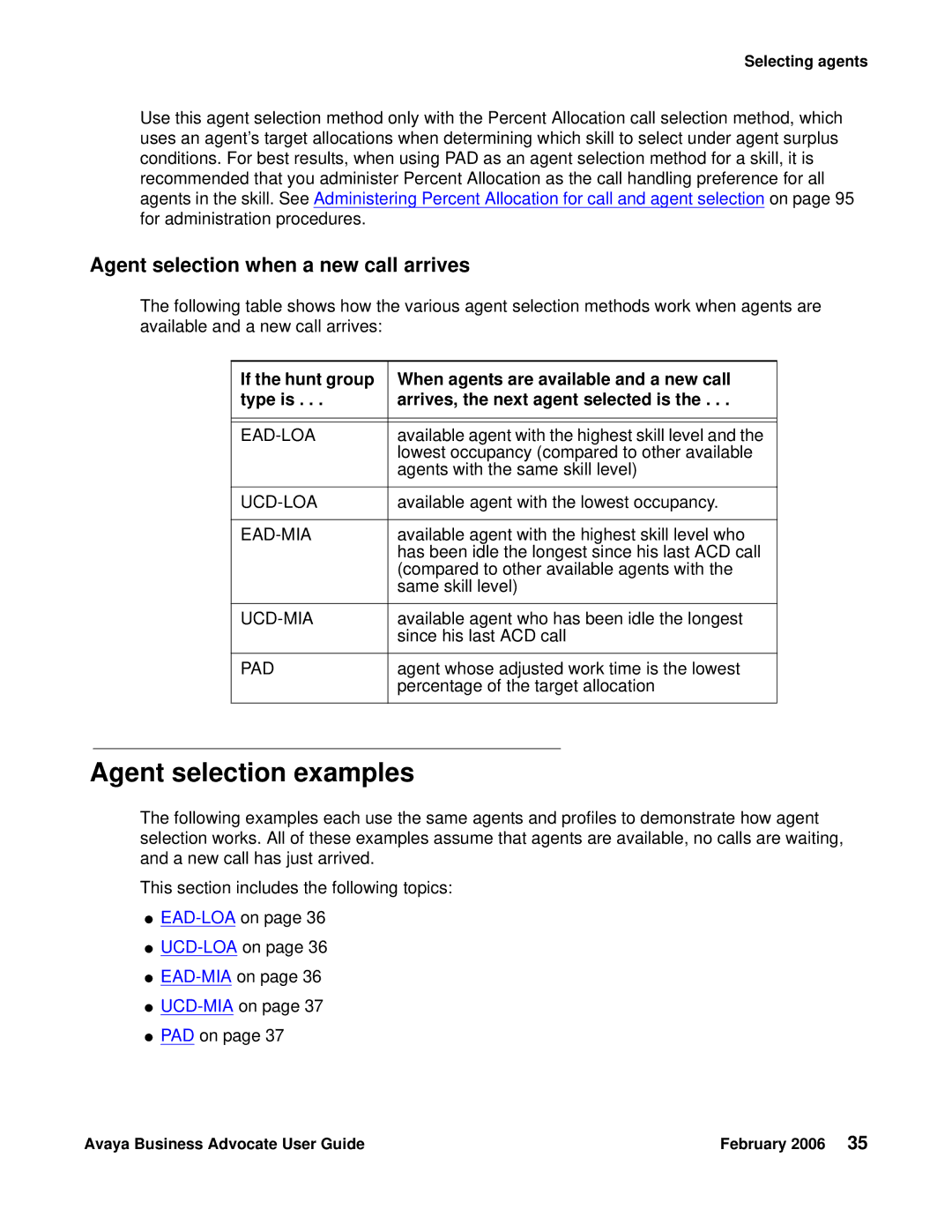Selecting agents
Use this agent selection method only with the Percent Allocation call selection method, which uses an agent’s target allocations when determining which skill to select under agent surplus conditions. For best results, when using PAD as an agent selection method for a skill, it is recommended that you administer Percent Allocation as the call handling preference for all agents in the skill. See Administering Percent Allocation for call and agent selection on page 95 for administration procedures.
Agent selection when a new call arrives
The following table shows how the various agent selection methods work when agents are available and a new call arrives:
If the hunt group | When agents are available and a new call |
type is . . . | arrives, the next agent selected is the . . . |
|
|
|
|
| available agent with the highest skill level and the |
| lowest occupancy (compared to other available |
| agents with the same skill level) |
|
|
available agent with the lowest occupancy. | |
|
|
| available agent with the highest skill level who |
| has been idle the longest since his last ACD call |
| (compared to other available agents with the |
| same skill level) |
|
|
available agent who has been idle the longest | |
| since his last ACD call |
|
|
PAD | agent whose adjusted work time is the lowest |
| percentage of the target allocation |
|
|
Agent selection examples
The following examples each use the same agents and profiles to demonstrate how agent selection works. All of these examples assume that agents are available, no calls are waiting, and a new call has just arrived.
This section includes the following topics:
●
●
●
●
●PAD on page 37
Avaya Business Advocate User Guide | February 2006 35 |
